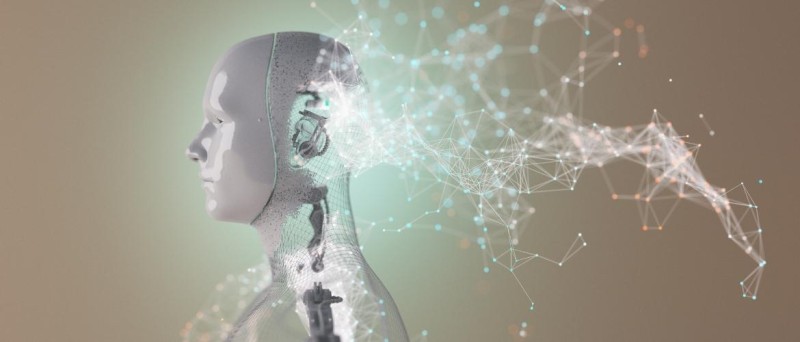
Weak AI: what is it?
Weak AI, also known as narrow AI, describes artificial intelligence algorithms that can perform a limited set of functions. This is currently the form of AI used in our daily lives. Connected speakers, watches or intelligent virtual assistants are designed to perform specific tasks. The term 'weak AI' is also used in contrast to 'strong AI', which represents machines and programs that have their own 'thoughts' and can make decisions. However, even though these two types of intelligence work differently and have different purposes, they are still often confused in the IT field. Find out in this article what weak AI is in practice and how it differs from strong AI.
Strong AI and weak AI: what are the differences?
The best way to understand weak AI is to distinguish it from strong AI. While both technologies are based on machine learning and big data, they each have very specific functions and objectives.
What is strong AI?
Strong artificial intelligence is first of all a philosophy that considers that there is no difference between the capabilities of intelligent machines and those of a brain. In this concept, algorithms can mimic the understanding and even the consciousness of a human. Strong AI includes:
general artificial intelligence: i.e. a machine must be able to solve any type of problem and not a limited and specific one;
Intelligence at the human level: machines and virtual assistants must achieve an intelligence similar to an average human being;
"superintelligence", where machines must be endowed with an intelligence far superior to that of a human being;
"artificial consciousness", where machines develop sensitivity and critical thinking skills.
Today, strong AI is still in the research and testing stage. The closest example to strong AI use is autonomous cars that can make multiple decisions and avoid accidents, but there is still much room for improvement in these concepts. In our personal and professional lives, it is weak AI technologies that are widely used.
Weak or narrow AI
Weak or narrow AI is, as the name suggests, intelligence that focuses on a 'narrow', i.e. well-defined, task or problem. Weak AI is used in particular to collect and analyse large volumes of data (big data). It relies on predefined functions and parameters programmed by a human being and does not make its own decisions.
These systems are not intended to fully simulate human intelligence, but rather to automate specific tasks using:
machine learning, which allows machines to learn from repeated experiences;
deep learning, which teaches AIs to predict outcomes;
natural language processing (NLP) that helps intelligent assistants, such as chatbots, to understand a user's intentions.
Weak AI: use cases
While they do not have reasoning abilities of their own, weak AI systems can outperform humans when programmed on particular tasks. They are still widely used in innovative and emerging IT technologies.
Voice assistants and chatbots
Intelligent virtual assistants and chat bots are often the first systems that come to mind when talking about AI. The best examples of weak AI are Siri, Alexa, and Google Search.
Most of the time, basic chat and discussion features are handled by an AI algorithm that handles answering common questions. With the development of AI, more advanced models also allow for predictive assistance. In particular, the tools can collect information about the user they interact with (current requests, history, etc.) in order to "guess" the reason for the contact.
The IoT
The Internet Of Things is inseparable from AI, as it includes all internet-connected equipment, especially connected objects. Learning and deep learning algorithms analyse and exploit the billions of pieces of data collected by these devices. This is sometimes referred to as the artificial intelligence of objects or IAoT, particularly in industrial fields where these systems are used for:
automation and optimisation of manufacturing processes;
alarms and predictive maintenance;
quality control;
monitoring and management of inventories.
Recommendation systems
Another major use of AI, much less obviously, is in recommendation systems. These are also predictive algorithms that search engines use to deliver personalised suggestions to Internet users. The search results take into account the query typed in, but also information about the visitor such as geographical location, language, age range, previous searches, etc.
Recommendation algorithms can in addition evaluate the similarities between several services, products or offers in order to propose options to Internet users which are similar to what they have already looked at or purchased.
Computer programming
Weak AI is becoming increasingly popular in the field of coding and programming. The latest example is AlphaCode, Google's new AI model that is capable of automatically generating source code.
While these uses are currently limited to competitive programming, it could well become a real asset for developers and other IT professionals. This AI could be used to create coding assistants or even to write its own software autonomously, thus coming closer to the objectives of strong AI.
Weak AI refers to the range of technologies that enable machines to perform specific problem-solving or reasoning tasks at a significantly faster rate than a human. It is this type of AI that represents the majority of job and project opportunities for IT professionals. The goal of strong AI is to reach a level where it can be mistaken for true human thinking and intelligence. Strong AI does not yet have a concrete existence or commercial use but considerable research and development is being devoted to it.



Comment
Log in or create your account to react to the article.